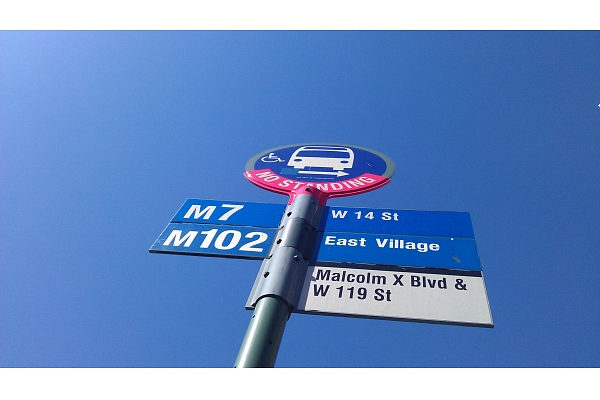Latvia – transit centre
Photo: Stock.XCHNG
TRANSPORT AND LOGISTICS IN BRIEF:
• Transport and logistics are among Latvia’s priority sectors;
• Transport and logistics constituted 13% of total value added in Latvia in 2011;
• Transportation volumes amounted to 77,6% of the external trade balance of services in 2011.
• Latvian ports, railways, transportation companies, customs warehouses, brokers, logistics centres, shipping agents, expeditors, oil and oil product pipeline operators provide efficient and competitive services. The transit and logistics sector ensures a considerable share in service export in Latvia’s economy. Therefore it receives special attention at state and company levels and the largest investments in transport infrastructure – ports, railways and roads – are first and foremost made in transit routes.
• Three major ports that are ice-free during the winter – Rīga, Ventpils and Liepāja – handle more than 75 million tonnes of cargo. Regular ferry services connect Latvian, Swedish and German ports. Container routes serve many other ports in the Baltic Sea region and the EU.
• A joint railway system with 1520-millimetre-wide tracks and a unified cargo transportation system provide CIS and Asian countries with a direct exit to Latvian ports in the EU. SJSC Latvijas Dzelzceļš transported record-high 60 million tonnes in 2012. 81% of rail freight volumes are transited via ports, 10% – land routes.
• The most important highways, railways, ports and airports are part of the European Union’s TEN-T network. Latvia’s transit corridors are also included in other international transport networks.
Key players
• State companies – JSC Latvijas Dzelzceļš and its subsidiary LDZ Cargo Ltd – maintained their leading positions in the sector in 2011. LDZ Cargo even surpassed its parental company in terms of turnover. Riga and Ventspils were the leading ports. Pro Logistic Services Ltd dominated cargo transportation, Skonto metāls Ltd – stevedore services, national airline airBaltic edged out Riga International Airport in terms of passenger turnover.
• Despite airBaltic’s stable position in passenger transportation, the airline’s passenger turnover decreased 9% to 3,08 million in 2012. The airport’s passenger turnover fell from 5,1 million in 2011 to 4,7 million in 2012. The airport, however, handled record-high 32 953 tonnes of cargo in 2012.
• The volume of cargo transported by rail grew 3,9% in the first eleven months of 2012, reaching 55,66 million tonnes. The volume of cargo transported via ports increased 5% to 45,08 million tonnes. International transportation volumes rose 3,6% to 54,36 million tonnes. Do-mestic transportation volumes grew 186% to 1,3 million tonnes. Land transit via Latvia reduced 0,7% to 4,32 million tonnes.
Priorities – routes and logistics
• Rail Baltica – the construction of new 1,435-millimetre-wide tracks connecting Estonia, Latvia and Lithuania with Poland and other European countries – is among the sector’s priorities. At the beginning of the year, a tender was announced for detailed research into Rail Baltica 2 to determine its exact route in Latvia, including links to the port and the airport.
• Latvia also plans to expand the route of the ZUBR cargo container train to the Ukrainian ports of Odessa and Illichivsk with a possibility of transporting goods to Turkey and other Black Sea ports, as well as back to the Baltic States and Scandinavia.
• The development of Latvian logistics and distribution business is a new priority. The conceptual approach ensures that goods can be delivered from a warehouse in Latvia to any store in the Baltic States, Helsinki, Stockholm or Warsaw within 24 hours and Scandinavia within 48 hours. There is also a potential in attracting cargo from China, other Asian countries and Turkey.
• The National Development Plan for 2014-2020 envisages considerable funds for the transport sector, for example, LVL 9,97 million will be invested to ensure safe navigation in the ports of Mērsrags, Roja, Salacgrīva and Skulte in winter, LVL 271 million – to renovate regional roads, LVL 558,6 million – to reconstruct regional roads, LVL 231,8 million – to integrate the port of Riga and the city of Riga in the European Union’s TEN-T network, LVL 517 million – to reconstruct main highways.
Transportation volumes in January-November 2012
Rail freight volumes 55,66 million tonnes (+3,9%)
Transit volumes via ports 45,08 million tonnes (+5%)
International transportation volumes 54,36 million tonnes (+3,6%)
Domestic transportation volumes 1,3 million tonnes (+18,6%)
Land transit via Latvia 32 million tonnes (-0,7%)
Source: the Latvian Council of Ports, Transit and Logistics
Useful links
Ministry of Transport
Transport Ministry’s website dedicated to transit
Latvian National Association of Haulers
Road Transport Administration
Latvian Association of Freight Forwarders and LAFF





